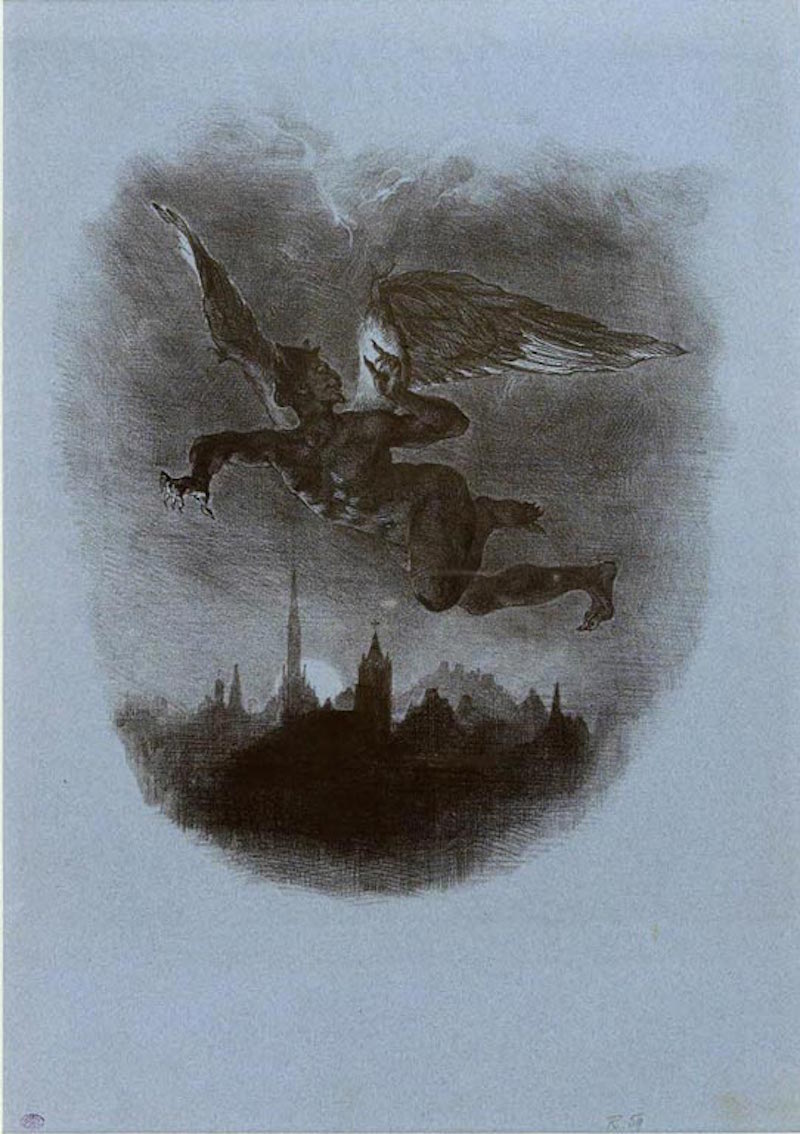



Mephistopheles Aloft
lithograph on blue paper • -
From 1826 to 1827, Delacroix produced a series of seventeen lithographs for Parisian publisher Charles Motte to illustrate Johann Wolfgang von Goethe Faust, which had just been translated into French by Friedrich-Albert-Alexander Stapfer. This is the first illustration: Mephistopheles, wings fully deployed, flying above the city plunged into shadow. Delacroix immediately shows that his pivotal character is, in fact, the demonic figure of Mephistopheles, the romantic hero par excellence, and places the action within an eerie atmosphere.
Well known throughout Europe since the late 16th century, the legendary story of Faust-the man who sold his soul to the devil-became popular again with Goethe’s play, which was published in Tübingen in 1806. In 1823, the young Albert Stapfer (1802-1892) produced the first French translation. Two years later, Gérard de Nerval (1808-1892) offered a new, more poetic translation. In 1824, Delacroix noted in the pages of his Journal his desire to tackle the subject. During his trip to England (May-August 1825), the painter was deeply moved by the tragic-comic interpretation of the figure of Mephistopheles as performed by the actor Daniel Terry during a theater performance on this theme on 24 June in London at the Royal Theatre on Drury Lane. Delacroix therefore probably accepted Charles Motte’s proposal enthusiastically. Published in 1828, unfortunately, the book was not a strong success. Nevertheless, Goethe praised its imaginative quality: "M. Delacroix has exceeded my own vision, and readers will find this all the more so alive and superior to what they had imagined (Goethe’s Conversations with Eckermann, Paris, 1988, pp. 171-172).
 Eugène Delacroix
Eugène Delacroix